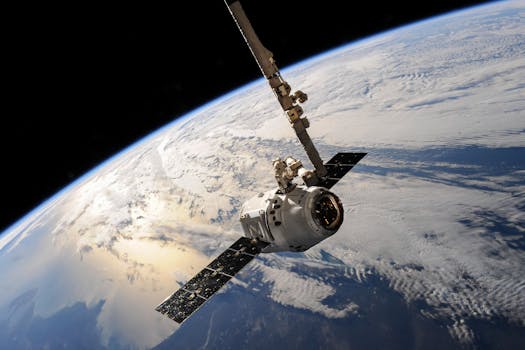The Future of Satellites: Revolutionizing Global Connectivity
The future of satellites is poised to revolutionize global connectivity, enabling faster and more reliable communication networks. With advancements in space technology, satellites are becoming increasingly important for a wide range of applications, from navigation and communication to weather forecasting and Earth observation.

The future of satellites is a topic of great interest and importance, as these space-based systems are set to play a crucial role in shaping the future of global connectivity. With the increasing demand for faster and more reliable communication networks, satellites are becoming an essential component of modern telecommunications infrastructure. In this article, we will explore the future of satellites and their potential impact on various aspects of our lives.
The focus keyword for this article is Future of Satellites, and it is essential to understand the significance of this topic in the context of global connectivity. The future of satellites is closely tied to the development of new space technologies, including advanced propulsion systems, more efficient power sources, and improved communication equipment. These advancements will enable satellites to operate more efficiently, provide better coverage, and offer a wider range of services.
Advancements in Space Technology
One of the key drivers of the future of satellites is the rapid advancement of space technology. New materials, designs, and manufacturing techniques are being developed, allowing for the creation of smaller, lighter, and more powerful satellites. For example, the use of 3D printing is enabling the production of complex satellite components, such as antennas and propulsion systems, with greater precision and speed. Additionally, the development of advanced solar panels and power storage systems is improving the energy efficiency of satellites, allowing them to operate for longer periods and provide more services.
Another significant advancement in space technology is the development of reusable launch vehicles. Companies like SpaceX and Blue Origin are leading the charge in this area, with their reusable rockets capable of launching satellites and other payloads into orbit at a significantly lower cost than traditional launch vehicles. This reduction in launch costs is expected to make satellite deployment more accessible and affordable, enabling a wider range of organizations and countries to participate in the global satellite industry.
Applications of Satellites
Satellites have a wide range of applications, from navigation and communication to weather forecasting and Earth observation. One of the most significant applications of satellites is in the provision of global navigation systems, such as GPS and Galileo. These systems rely on constellations of satellites orbiting the Earth, providing location information and timing signals to receivers on the ground. Satellites are also used for communication, enabling the transmission of data, voice, and video signals over long distances.
Weather forecasting is another critical application of satellites, with geostationary and polar-orbiting satellites providing vital data on atmospheric conditions, cloud patterns, and storm systems. This information is used to predict weather patterns, issue warnings for severe weather events, and monitor climate change. Satellites are also used for Earth observation, providing high-resolution images of the planet’s surface, oceans, and atmosphere. This information is essential for a wide range of applications, including environmental monitoring, disaster response, and natural resource management.
Challenges and Opportunities
Despite the many advancements and applications of satellites, there are also challenges and opportunities that need to be addressed. One of the significant challenges facing the satellite industry is the increasing amount of space debris in Earth’s orbit. This debris, consisting of defunct satellites, rocket parts, and other objects, poses a significant collision risk to operational satellites and other spacecraft. To mitigate this risk, satellite operators and manufacturers are developing new technologies and strategies for debris removal and mitigation.
Another challenge facing the satellite industry is the need for greater sustainability and environmental responsibility. The production and launch of satellites require significant amounts of energy and resources, and the disposal of defunct satellites at the end of their life can contribute to space debris. To address these concerns, the satellite industry is shifting towards more sustainable practices, including the use of eco-friendly materials, more efficient propulsion systems, and responsible disposal of satellites at the end of their life.
Conclusion
In conclusion, the future of satellites is a complex and multifaceted topic, with significant implications for global connectivity, space technology, and a wide range of applications. As the demand for faster and more reliable communication networks continues to grow, satellites will play an increasingly important role in meeting this demand. With advancements in space technology, new applications and services will emerge, and the satellite industry will continue to evolve and expand.
The future of satellites is not without its challenges, however, and the industry must address concerns around space debris, sustainability, and environmental responsibility. By working together and developing new technologies and strategies, the satellite industry can ensure a sustainable and responsible future for these critical space-based systems.



